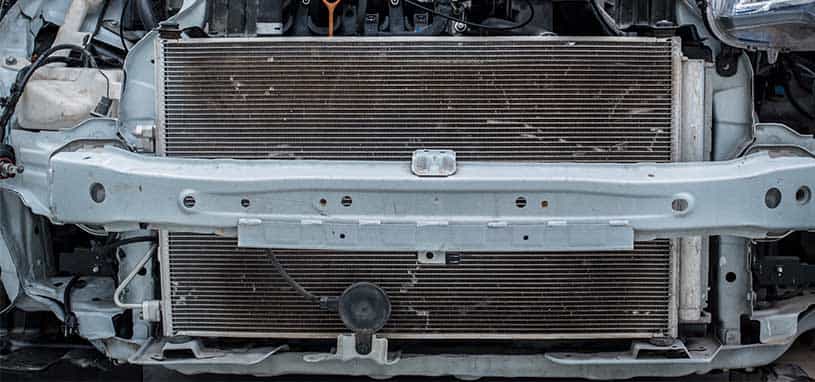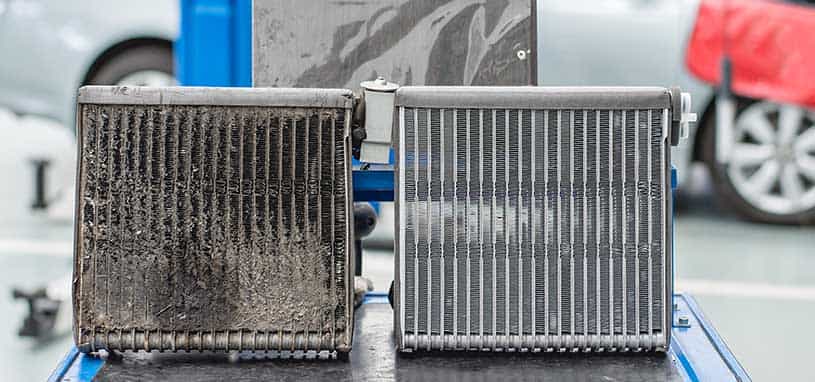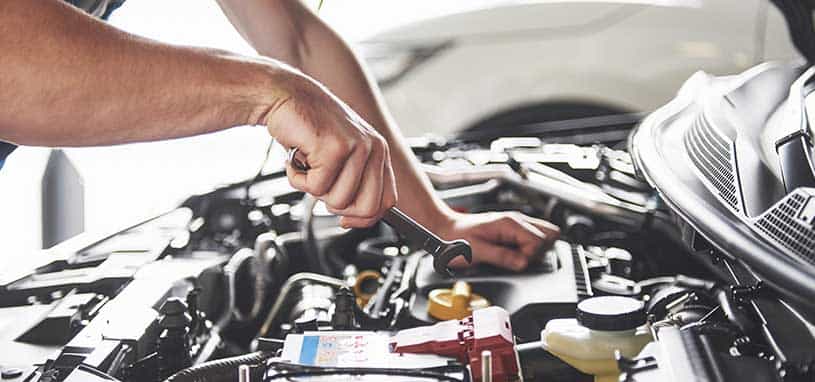How does the aircon in a car work?
Explaining the components of your car air conditioner
Have you ever wondered how your car’s aircon system works? Most of us never give it a second thought. That is, until your air conditioner fails you, typically on the hottest day of summer. Air conditioning is a highly technical process that relies on many parts working together. At Natrad, we provide specialist air conditioning repair and maintenance services for a huge range of cars, trucks, and heavy equipment. Our expert team is ready to install all kinds of air conditioning system components.
Refrigerant

Refrigerant is the lifeblood of your car’s air conditioning system. Its ability to change from gas to liquid and back is what keeps you cool and comfortable on the hottest days. Here’s how refrigerant works:
- Refrigerant absorbs heat from the interior of the car.
- It radiates this heat outside.
- The refrigerant returns after being cooled, ready to absorb heat again, keeping your car cool.
Refrigerant leaks are a common cause of car air conditioning problems. As a part of our thorough air conditioning service and repairs, a Natrad technician will always check your refrigerant levels, repair any leaks, and refill as required.
Compressor
The compressor is the beating heart of your air conditioning system. It’s a pump that circulates refrigerant throughout all other AC components. The compressor contains several moving parts that can wear out over time and require the unit to be replaced. At Natrad, we stock compressor replacement kits, most popular vehicle makes and models to help you if your compressor is having issues.
Condenser

The condenser is similar to a mini radiator, radiating heat from the passenger compartment to the outside air as refrigerant circulates through the condenser’s tubes. It condenses the refrigerant from gas into a liquid, as it cools through this process. There are several reasons why your condenser might fail:
- It is usually located at the front of the vehicle, so it is easily damaged in head-on collisions.
- Condensers can also become blocked or develop leaks, which must be replaced when they fail.
- Components can deteriorate over time, causing refrigerant leaks.
A damaged compressor has blown debris through the AC system and condenser. This causes blockages and damage to other components throughout the system. When the cooled refrigerant is pumped from the condenser to the thermal expansion valve, it passes through the valve, which controls the amount of liquid refrigerant released as a mist, expanding the liquid into a less dense form. In a less dense state, the refrigerant is able to lose even more temperature, and this additionally cooled mist is then pumped into the evaporator.
Symptoms of a faulty TX Valve
- Diminished airflow
- Inconsistent cooling performance
- Unusual sounds
It is important to replace a faulty thermal expansion valve promptly as it can cause liquid to enter the compressor and lead to severe internal damage to other parts of the system, requiring expensive replacement of major air conditioner components.
Evaporator

- The liquid refrigerant in your AC system evaporates into a gas inside the evaporator and becomes very cold.
- A blower fan then pushes air across the evaporator’s cold tubes, blowing cool air into the passenger cabin.
Evaporators are susceptible to corrosion and blockages, in which case, they must be replaced. Also, if condensation is not appropriately directed away from the evaporator, parts of the evaporator may freeze over, which also causes damage.
Receiver drier
The receiver drier helps to protect the system by trapping moisture and impurities that might cause damage to other components. Periodically replacing the receiver drier helps to keep the whole air conditioning system in top working condition.
Heater
If your car’s heater isn’t working properly, the heater core may need replacing. Doing so will help ensure effective demisting for driver visibility as well as passenger comfort, keeping everyone safe and secure. You can stay warm on the coldest winter days with a replacement heater core from one of your local Natrad stores.
Fittings
Fittings, hoses and pipes are responsible for connecting the main components of your air conditioning system. If left unchecked, over time, they can deteriorate and cause refrigerant leaks and result in damage to other air conditioning parts. At Natrad, we stock all the fittings needed to repair your car’s air conditioner.
So, how does the aircon system work?
Now that we understand the different parts and components associated with a car’s air conditioning system, we can explore how these parts work together to create a fully functioning, effective air conditioning unit. Here’s a step-by-step guide on how a car aircon works:
- The car’s air conditioning is turned on. This activates the compressor.
- The compressor pressurises refrigerant gas, causing it to become a high-pressure, high-temperature vapour and pumps it through the AC system. This compression process generates heat.
- This hot, pressurised refrigerant flows into the condenser, located in front of the car’s radiator. The condenser radiates the refrigerant’s heat to the outside air. Cooled, the refrigerant transforms from a vapour into a high-pressure liquid.
- After leaving the condenser, the high-pressure liquid refrigerant enters the expansion valve. This component creates a restriction, leading to a significant drop in pressure and temperature.
- This cold, low-pressure liquid refrigerant enters the evaporator, usually situated within the car’s dashboard. The liquid then evaporates, becoming very cold and making the evaporator itself cold too.
- The blower fan pushes the air in front of the cold evaporator coils into the cabin through the AC system vents. Cool air is blown into the passenger cabin.
- The refrigerant continues to cycle back through the system, having transformed into a heated gas form again. It returns back to the compressor where the whole process begins again.
Ask the experts at Natrad about your car’s aircon
Is your vehicle’s air conditioner under-performing? Common symptoms of faulty car air conditioning systems include:
- A lack of cool air
- Noisy operation
- Foul odours
If you experience any of these issues, bring your vehicle into a Natrad workshop. Our dedicated team of air conditioner specialists can rectify the problem for you. With a large network of heating and cooling workshops in the country, Natrad is a trusted name in automotive air conditioning systems. Plus, we stock a massive range of air conditioner parts. These parts are designed to meet or exceed the original equipment performance of your vehicle.

Get regular servicing to ensure your aircon works
Regular servicing of your car’s air conditioner ensures it is in top condition when you need it. Bring your car into Natrad, and our air conditioning technicians will connect it to a charging station to check your refrigerant levels and pressure.
- Your car’s entire air conditioning system will be inspected to identify any failed components.
- If necessary, the refrigerant present in the system will be extracted and stored before parts are removed for replacement or cleaning.
- Once your air conditioning system is reassembled, the correct amount of refrigerant and oil will be added.
Plus, all our workmanship and products are supported by Natrad’s nationwide warranty. Contact us now for superior air conditioning repair, and a range of other quality vehicle services.









